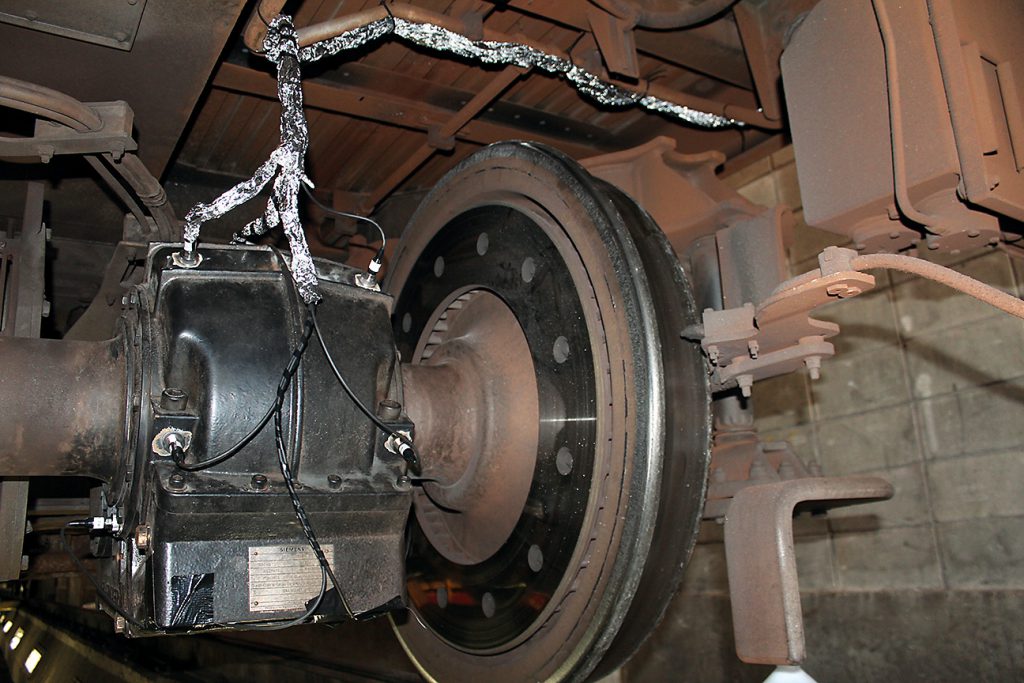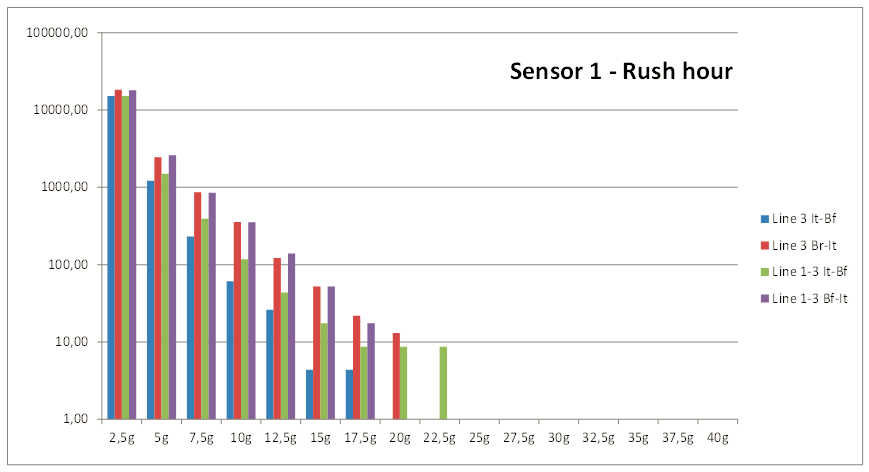
Measuring vibrations during the operation of a machine can yield valuable information about the dominant operating conditions or possible damages. During steady-state operation there is typically a periodic signal that can be broken down into the dominant frequencies via Fast-Fourier-Transformation (FFT). These frequencies can then be compared to the characteristic frequencies of the system’s components.
The turning of a shaft leads to a vibrational excitation corresponding to the rotational frequency or the shaft or a whole number multiple thereof. Damage on a bearing ring leads to an excitation corresponding with the rolling frequency that results from the rotational speed and bearing geometry. One can also consider the frequency of tooth engagement or the electrical supply.

Under non-steady-state conditions, i.e. changing rotational speeds and loads, FFT is generally not applicable. However, in these cases the peak values can be classified and counted. This applies to e.g. the bumps that a train car gearbox experiences when it changes tracks, goes over road crossings, or even drives over a track with imperfections. In this manner, sections can be identified that have an increased contribution to the deterioration of the mechanical structure.
In various industrial machines such as rubber mixers and stone mills, the load peaks correspond strongly to the process parameters. In these cases, class counting can be used to optimize the process, allowing the demands on the mechanical structure to be reduced without sacrificing productivity.